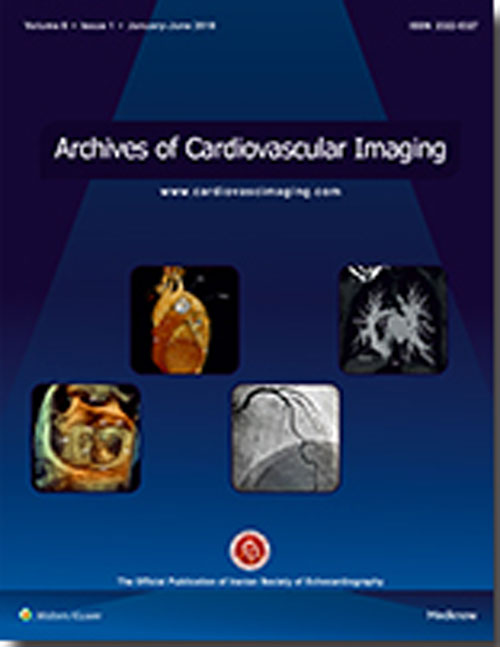Echocardiographic Assessment of Left Ventricular Twisting and Untwisting Rate in Normal Subjects by Tissue Doppler and Velocity Vector Imaging: Comparison of Two Methods
Author(s):
Abstract:
Background
The torsional parameters of the left ventricle (LV) are sensitive indicators of the cardiac performance. The torsion/twist of the LV is the wringing motion of the heart around its long axis created by oppositely directed apical and basal rotations and is determined by contracting myofibers in the LV wall which are arranged in opposite directions between the subendocardial and subepicardial layers. This motion is essential for regulating the LV systolic and diastolic functions..Objectives
Recent advances in echocardiography techniques have allowed for quantification of LV mechanics. The aim of the present study was to compare various LV twisting and untwisting parameters in healthy human subjects determined by velocity vector imaging (VVI) and tissue Doppler imaging (TDI) at rest..Patients and Methods
All volunteers (47 healthy subjects in two groups: 24 subjects in VVI group and 23 subjects in TDI group) underwent complete echocardiographic study, and LV torsional parameters were assessed by VVI or TDI methods. In addition, LV torsion and LV twisting/untwisting rate profiles were calculated throughout cardiac cycle..Results
Twist degree was significantly lower in the VVI group than in the TDI group (P = 0.008, r = 0.56). LV torsion was lower in the VVI group but was not significant. (P = 0.13, r = 0.38). Twisting rate (P = 0.004, r = 0.66) and untwisting rate (P = 0.0001, r = 0.61) were lower in the VVI group, but when timing of untwisting rate was normalized by systolic duration, there was no significant difference between the two groups (P = 0.41, r = 0.59). Similarly, when peak untwisting rate was normalized by LV length, there was a significant decline in normalized peak untwisting rate in the VVI group (P = 0.004, r = 0.62), but not in peak twisting rate normalized by LV length (P = 0.12, r = 0.42). Peak untwisting rate normalized by LV torsion was not statistically different between the two groups (P = 0.05, r = 0.53)..Conclusions
Results suggest that these methods cannot be interchanged, and VVI showed significantly lower LV peak twist, peak twisting rate and peak untwisting rate. However, when LV twist and LV twisting rates were normalized to LV length, values were comparable for both imaging techniques.Keywords:
Language:
English
Published:
Archives Of Cardiovascular Imaging, Volume:1 Issue: 2, Nov 2013
Pages:
63 to 71
magiran.com/p1212218
دانلود و مطالعه متن این مقاله با یکی از روشهای زیر امکان پذیر است:
اشتراک شخصی
با عضویت و پرداخت آنلاین حق اشتراک یکساله به مبلغ 1,390,000ريال میتوانید 70 عنوان مطلب دانلود کنید!
اشتراک سازمانی
به کتابخانه دانشگاه یا محل کار خود پیشنهاد کنید تا اشتراک سازمانی این پایگاه را برای دسترسی نامحدود همه کاربران به متن مطالب تهیه نمایند!
توجه!
- حق عضویت دریافتی صرف حمایت از نشریات عضو و نگهداری، تکمیل و توسعه مگیران میشود.
- پرداخت حق اشتراک و دانلود مقالات اجازه بازنشر آن در سایر رسانههای چاپی و دیجیتال را به کاربر نمیدهد.
In order to view content subscription is required
Personal subscription
Subscribe magiran.com for 70 € euros via PayPal and download 70 articles during a year.
Organization subscription
Please contact us to subscribe your university or library for unlimited access!


